World of watches
THE IWC-PORSCHE DESIGN COMPASS WATCH: FINDING THE RIGHT DIRECTION
By Michael Friedberg
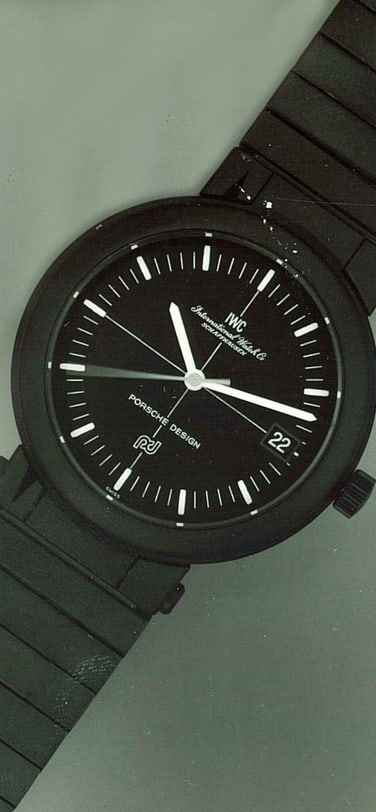
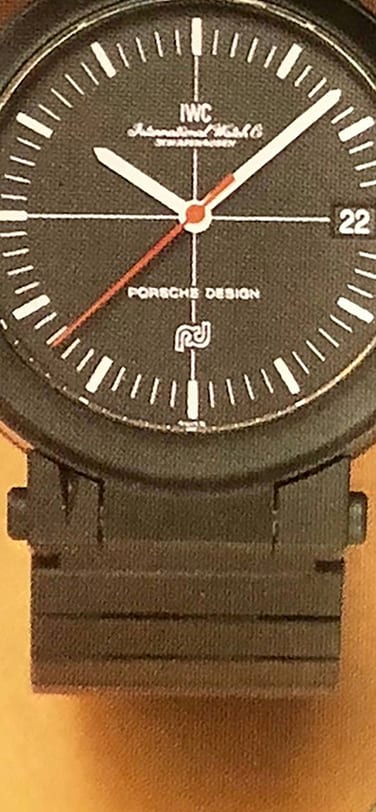
THE IWC PORSCHE-DESIGN COMPASS WATCH (REF 3510)
The IWC-Porsche Design compass watch was more than just a beautiful timepiece, it was an innovative combination of wristwatch and compass that helped bring IWC through the 1970s quartz crisis.
Forty years ago, in 1978, IWC took a calculated risk. A few years before, inexpensive quartz watches decimated the entire Swiss mechanical watch industry.
Searching for new ways to survive as sales plummeted, IWC tried becoming a pocket watch specialist. It also promoted jewelry watches and introduced a new SL sports line. But nothing succeeded like its alliance with Ferdinand A. Porsche and Porsche Design. The first product of that alliance was the revolutionary IWC-Porsche Design compass watch.
F.A. Porsche was an industrial designer par excellence. The son of the founder of Porsche automobiles, in 1963 he produced a design triumph, the Porsche 911 automobile. In 1972, he left the family company to establish Porsche Design Studio.
His designs were clean, bold and contemporary, following the German Bauhaus design school philosophy of form following function. This approach provided an optimal grounding for IWC to establish new bearings and to again find its way.
Battered by the quartz revolution, as well as the increasing price of gold and the Swiss franc, IWC found something important here. An IWC–Porsche Design watch would propel the company forward and would appeal to a younger, upwardly mobile clientele.
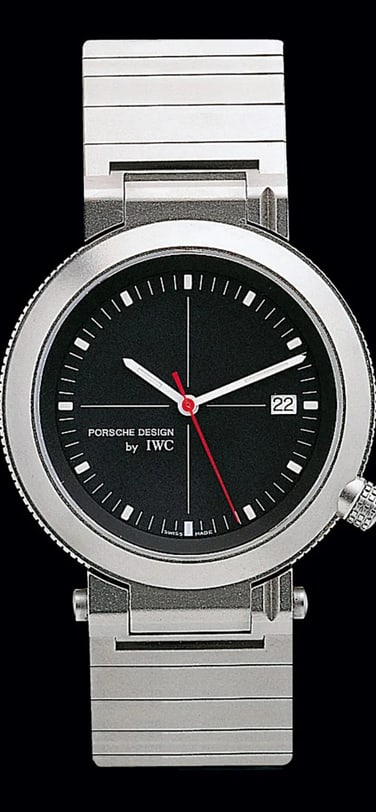
GROUND-BREAKING DOWN TO THE DIAL
The proposed compass watch would embody contemporary design and its mechanics would be unique, combining two precision instruments into one wristwatch. One measured time and the other measured direction. The combination would be unique because both the watch case and movement would be sufficiently anti-magnetic in order to not skew the compass function.
After Porsche Design and IWC entered into a 20-year agreement in March 1978, IWC assumed the difficult role of actually producing the watch. New materials and techniques had to be developed. The design required a hinged double-decker case which was anti-magnetic so the compass could work. A special hardened aluminum light alloy, also anti-magnetic, was used. The watch movement was changed by substituting anti-magnetic rotor bearings.
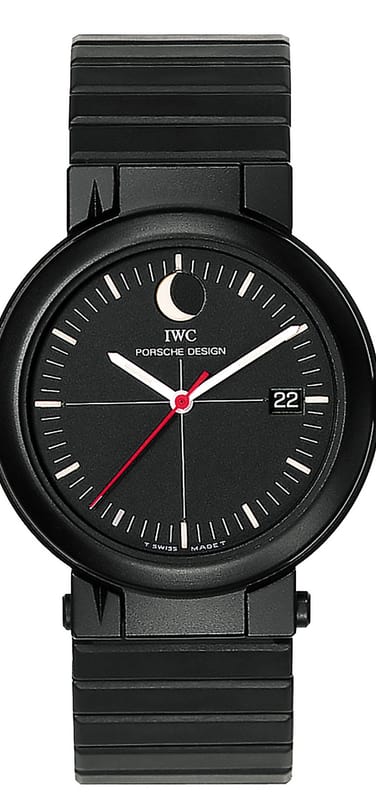
THE IWC-PORSCHE DESIGN MOON PHASE COMPASS WATCH (REF 3551)
The end result, debuting in late 1978, was IWC’s reference 3510, the IWC Kompassuhr or compass watch. Even the case and dial colors were ground-breaking. The watch was only made in black, a unique color for watches back then, or a more unique military green called “NATO olive”. The matching cases were made with a PVD coating on the aluminum.
Reference 3510, the original IWC–Porsche Design compass watch, was 39mm wide and 12mm high. This was remarkably compact given its hinged case with four sapphire glasses. Inside the case was an automatic movement, IWC calibre 375, with 22 jewels. The ingenious construction claimed five international patents.
All this was revolutionary for its era. Here was a mechanical watch introduced in the age of quartz, with new functions, a new case material, new colors, new design and new manufacturing techniques. The compass watch was both a design triumph and an engineering achievement.
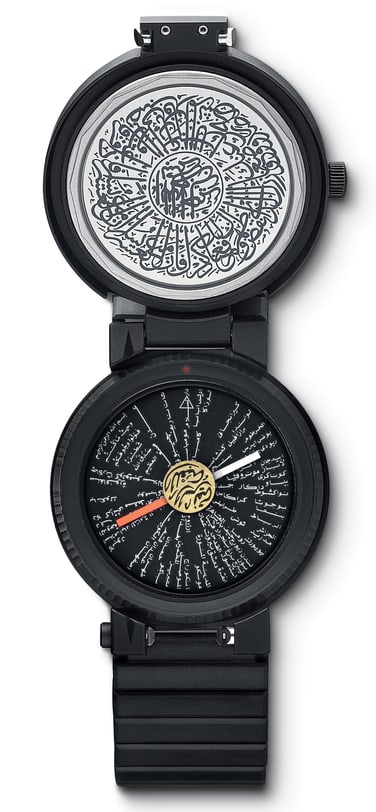
THE START OF A NEW GENERATION
As IWC searched for fresh approaches for brand new markets, this watch succeeded. It evoked adventure, was eminently practical and had a cutting-edge design that appealed to a new generation.
The original IWC compass watch paved the way for an entire generation of watches from the ingenious IWC-Porsche Design collaboration. Reference 3510 was followed in 1991 by a second compass watch, reference 3511, which had a titanium case that then was considered an exotic watchmaking material. That model in turn was followed in 1985 with reference 3551, a compass watch with a moon phase indication.
The success of the IWC compass watch led to other special IWC-Porsche Design watches. These included several chronograph models, all with modern case design including integrated pushers to operate the chronograph. The collaboration also created several remarkable diving watches, of which the Ocean 2000 is especially noteworthy – with a modern Porsche Design case it allowed an enormous submersible depth of 2000 meters.
When a company must find new products, it frequently must take gambles. The ones that succeed can be great successes. Here, IWC took a company-changing gamble with Porsche Design, and the collaboration resulted in a perfect match.
The IWC-Porsche Design compass watch, based on a bold design and IWC engineering acumen, revived IWC and perhaps the entire Swiss mechanical watch industry during the quartz dark ages. A compass found the right direction.
Michael Friedberg has been collecting watches, especially IWCs, for more than three decades. From 2001 through 2015 he was moderator of the IWC Collectors’ Forum and has written extensively about IWC’s history and technical features.